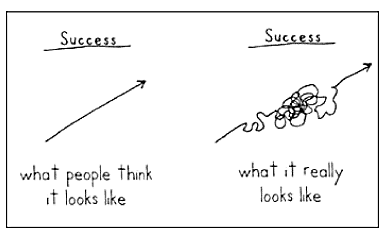“If you want to be a great shooter from 25 feet, you better be a great shooter from 4 feet first”
— Coach Mac 🏀 (@BballCoachMac) April 12, 2020
– Steve Kerr
Steve Kerr is one of the NBA’s best all-time shooters, and he has won an NBA championship as a head coach. With such a reputation, this comment will get shared and liked and retweeted for weeks, as it reinforces the importance of form shooting, and even more so, the fundamentals that many purists believe are missing from today’s game. None of this makes the statement accurate.
The argument, of course, will be that any great shooter from 25′ will be a great shooter from 4′. I imagine that Curry, Lillard, Young, Harden, Gordon, etc. can stand in front of the basket at 4′ and make shots forever. No disagreement.
Therefore, because we believe that improvement is linear, we believe that shooting well at 4′ causes or at least is a prerequisite for the ability to shoot well at 25′. One comes before the other. Because we practice close to the basket in order to shoot far from the basket, successful shooting far from the basket must be because of the successful shooting close to the basket. We believe this is why we practice, and the results confirm our beliefs.
What if we look at it from the other direction? Does every great shooter at 4′ shoot well from 25′? Very clearly, the answer is no.
Curry, Lillard, etc. shooting well from 4′ and 25′ is correlation, not causation. Correlation describes a relationship; in this case, every great shooter from 25′ shoots well from 4′: These two things are related. Of course, few players who shoot well from 4′ are great shooters from 25′; in that sense, these are unrelated. Causation describes a cause and effect; one causes the other. In this case, does shooting well at 4′ cause great shooting at 25′? We know this is untrue.
Shooting from 25′ is more complex than shooting from 4′. Watch players shoot from 4′: Most use only their upper bodies. Players stand flat-footed and use only shoulder flexion, elbow extension and wrist flexion to shoot.
When shooting from 25′, players coordinate their entire bodies.
Shooting well from 25′ requires total body coordination, rhythm, timing, control and strength. Shooting well from 4′ places far fewer demands on these abilities. I can make dozens and dozens of shots in a row from 4′ without having shot in weeks, but not from 25′. Without practicing, I have lost the coordination, rhythm, timing and strength that once allowed me to make deep shots.
Form shooting and deep three-point shooting are two different skills, which is why I have greatly decreased form shooting in the players who I coach now compared to when I started as a shooting coach. Form shooting is minimally related to game shooting. Ignore the missing game constraints — defense, decisions, pre-shot movement — and the skill of deep shooting differs substantially from typical flat-footed close to the basket form shooting.
Does this mean that players should not do form shooting or shoot close to the basket? No.
However, I’d suggest using the entire body when form shooting. When young players shoot on a 10′ basket, they cannot do a true form shooting drill because of their strength deficits. They use their whole bodies:
Therefore, young players shoot start close to the basket with their shooting, whether we call this form shooting or just jump shots close to the basket. Essentially, they are the same thing when players lack strength.
Because I believe that coordination forms the foundation for skill, players should use their full bodies in every shot. I also believe that form shooting drills should be variable — shoot from different distances or locations rather than only shooting directly in front of the basket.
The more important points, to me, are:
(1) Correlation does not equal causation. Because things are related, does not mean that one caused the other. We cannot assume that one thing causes another just because that fits our perception of practice or development.
(2) Skill development is nonlinear. We believe that things build from simple to hard or from day 1 to day 2, but there is no linear development. The reality is not the straight line on the left, but the swirly line on the right.
. Credit: William Penn University Wilcox Library
Credit: William Penn University Wilcox Library